Share your story with us and you could be featured on this site. Share now!
Fauna and Flora in Botswana
Botswana land covers an area of 582 000sqm, the size of Kenya or France, with a semi-arid climate and has a total of between 2600 and 2800 species of flora and fauna (Kalakiwe, M. 2001) Within this space there are various plants and animals found in different regions throughout. This article seeks to explore the natural world of Botswana by sharing information on the wildlife and vegetation across the country.
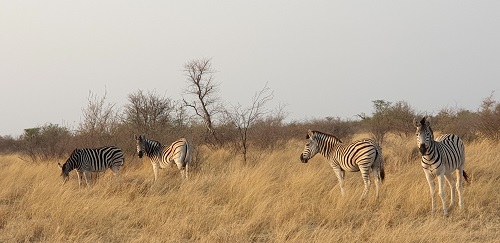
The great fauna and flora in Botswana makes the country a haven of great beauty. Wildlife and vegetation play a leading role in the tourism sector of Botswana as the larger part of 2 million tourists who visit Botswana enjoy the country's habitat and scenery.
Although a significant part of Botswana is covered by savanna, the country has adequate vegetation to support tens of thousands of wild animals. Common trees are the mopane, camel-thorn, motopi (shepherd's tree) and baobab.
Botswana has some of the world famous wetlands such as the Chobe River and Okavango Delta in the northern part of the country and the dry areas such Kalahari Desert in the centre and southwest.
In that regard the types of plants and animals found have different adaptations according to the landscape of the particular region. One will find cactus plants and camels surviving in a desert like the Kgalagadi desert while wetlands and semi-arid regions have more plants like the waterlilies and abundant wildlife such as elephants, flamingos, hippos and lions.
To help visualise this information, a map has been provided below to engage the readers mind and be able to pin point areas discussed.
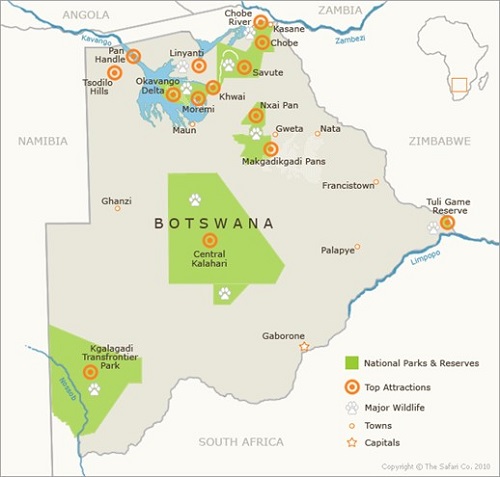
(photo credit: The safari company)
Likewise, Botswana is a 'natural game reserve' for most wildlife found in southern Africa. The country boasts 164 species of mammals, 550 species of birds, 157 species of reptiles, 38 species of amphibian and over 70 species of fish mostly within the Okavango Delta. This includes lion, leopard, cheetah, elephant, giraffe, zebra, hippopotamus, rhinoceros, African buffalo, hyena and antelope.
All this fauna and flora in Botswana is a great delight for nature-enthusiasts and excursionists, as well as a great habitat for the well protected wildlife.
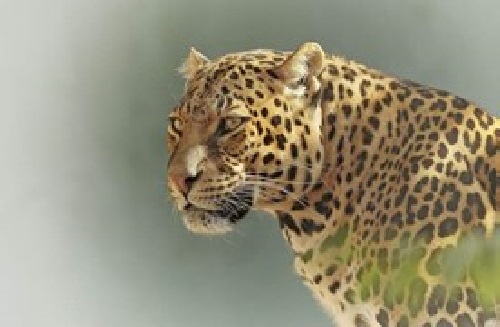 (Photo credits: Sesame Ontumetse, botswanaflora online) |
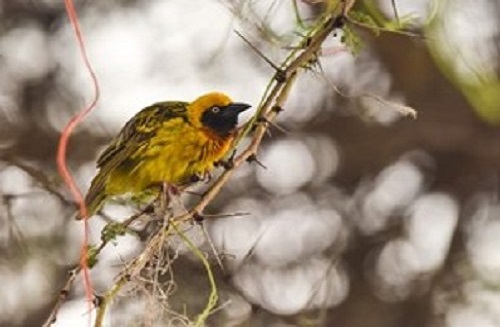 (Photo credit: Mokolodi nature reserve) |
Wildlife
Botswana is a good place for viewing game and photography.
The abundant wildlife in Botswana follows seasonal rains most of the year, which is between November and April. During the dry season these congregate around areas of permanent waters.
Therefore, all year round there is an opportunity to view the game across the country at one time then hurdled together around drinking ponds at another.
Botswana big five game
Globally, there is a set of five species of animals commonly known and accepted as the BIG FIVE GAME. These are the lion, elephant, buffalo, leopard and rhinoceros - all of which are found in Botswana.
Do you know why they are called the big five? Size? Nope. They are referred to as the big five game because they are difficult to hunt. The name was coined by big-game hunters who felt that the set was difficult to hunt on foot.
Of the five, the Botswana lion is endangered and faced with being wiped out by trophy hunters. The lion is considered to be one of Botswana's major attractions, but has equally been a major target of game hunters and is now endangered.
Hence, Botswana has made the hunting of lion illegal. In addition, through the Northern Tuli Predator Project to track Botswana lions (and other species such as leopards and wild dogs), there are efforts to preserve the endangered animals.
Grasslands
The vegetation in Botswana is called bushveld which is a sub-tropical woodland that covers much of southern Africa.
The Botswana bushveld is dominated by grassed plains but dotted with dense clusters of trees in the eastern Botswana, the Okavango and Chobe; and tall shrubs in much of central Botswana.
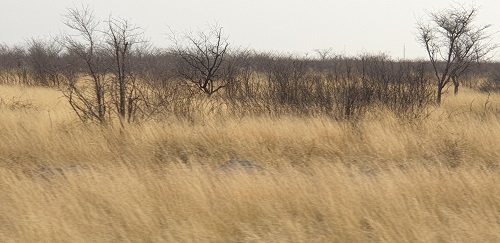
Kalahari Desert
Desert terrain stretching from the Kalahari (Kgalagadi) Desert region covers most parts of the country at 84%, from the south eastern parts to the central parts of the country.
The vegetation found in such terrain defy the whole meaning of the word ‘Desert’ as it adapts well to the semi-arid conditions. Plants found in the Kalahari areas have thorny branches and prickled leaves to preserve water and protect themselves from predators.
The areas have variety of savanna plants like wide spread grass, low shrubs and trees standing on sandy ridges. The grass found are wide spread providing feeding for the animals around to balance the eco-system while tall trees such as the Marula tree are also visible.
There are hard surfaced pans around which fill in water during good rainy seasons and are able to hold the water for long a period of time which is of great importance to the wildlife as they quench thirst, get salt and feed on the green grasses around.
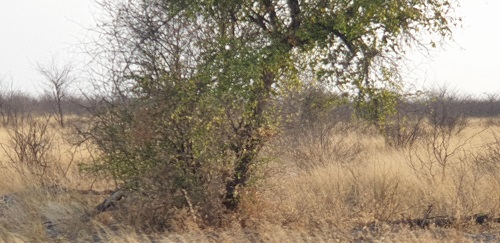 |
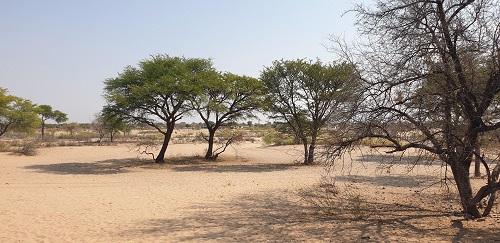 |
Botswana’s tourism development gives significant attention to wild animals, and in that regard, the Kalahari region becomes a focus area as a tourism hub, due to its variety of animals both in protected parks and open areas where wildlife roams freely in the wilderness.
To the south of the country there is the Kgalagadi Trans-frontier Park which is the first formally declared transboundary park in Africa after merging parks in Botswana and South Africa (Kalakiwe, M. 2001). Going further up in the region is the Central Kalahari Game Reserve.
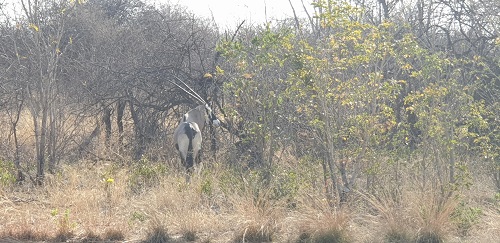
These two ecological areas – the KTP and CKGR – are where you find diverse wild animals that graze on the lush vegetation found in the area. Gemsbok, springbok, ostriches, vultures, camels and warthogs are some of the animals found in the Kalahari region. Antelope draw water from feeding on succulent plants such as wild watermelons and cucumbers at night and early morning after plants regain moisture; thereafter they remain inactive during the heat of the day to conserve body moisture (Travel Companion, Botswana Tourism.2009). Other wild animals forming the wild animal kingdom are duikers, ostrich, wildebeest, kudu, zebra and predators such as lions, cheetah, leopard and hyenas, both spotted and brown.
The Okavango
The north-western part of the country has the richest wildlife and vegetation a particularly the Okavango Delta and the Moremi Game reserve. The areas receive abundant water from Kavango in Angola during winter which spreads some 1300 kilometers creating swamps and revitalizing the diverse ecosystem along the way.
In the Okavango aquatic and terrestrial vegetation are common and they include common reed with woody vegetation like mophane, phoenix palms and mokolwane palms. Furthermore, there are over 250 edible plants species recorded adding more variety to the flora of the Okavango region. More vegetation found in the Okavango include sausage trees, raintrees and African mangosteen. The Botswana Tourism recorded 1300 species of flowering plants in the Okavango area (Travel companion. Northern Botswana: 2009)
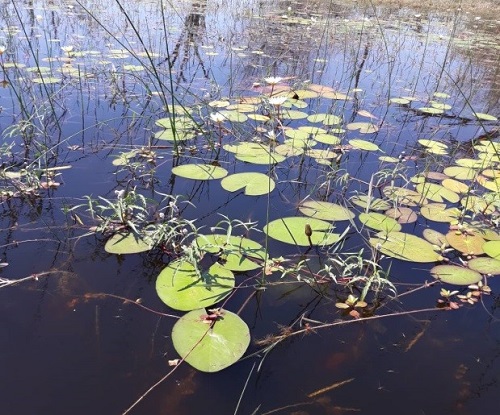 |
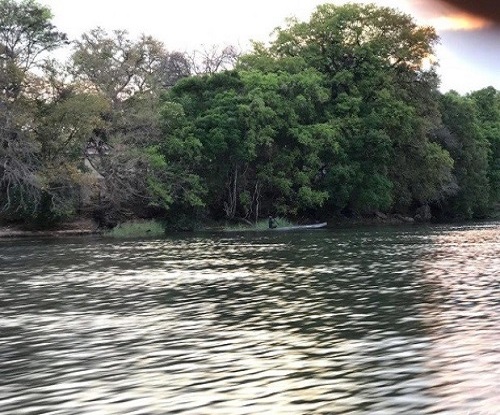 |
(Photo credits: Sesame Ontumetse, botswanaflora online)
As a result of good vegetation throughout the year there is a wide range of wildlife that comprises of mammals, birds, reptiles and amphibians. The Okavango records 122 species of mammals, 71 species of fish, 444 species of birds, 64 species of reptiles (Botswanatourism.co.bw). The area is a destination of large herds of elephants and buffalo moving through their migration route in search for water and good grazing grounds.
This is Botswana's fishermen territory as there is abundant fish in the rivers across the northern parts of the country which covers Thamalakane, and even Boteti rivers. All of the big 5 (Lion, leopard, buffalo, elephant, rhino) in this region are present, including antelope, zebras, wildebeest, giraffe, ostrich, hippo, crocodile, rhino (both black and white), red lechwe, waterbuck, reedbuck, duiker, impala, kudu, steenbok, wildebeest, hartebeest, sable, roan, , genet, serval, and caracal, along with a vast assortment of over 400 species of birds in land and water, some of which are rare and endangered.
Chobe Region
The Chobe River undoubtedly supports the ever-blossoming flora and fauna in the area to balance the ecosystem. Chobe, in the north of Botswana, is the area where one can find large herds of elephants, including buffalos and zebras. The Chobe National Park provides a spectacular scenery during a game drive, as about more than 15 different species of animals it can be seen including predators such as lion, leopard, hyena and jackal. Other more animals include waterbuck, lechwe, giraffe, kudu, roan and sable, impala, warthog, bushbuck, monkeys and baboons.
Taking a cruise in the mighty waters one can almost touch the hippo and crocodiles and enjoy an array of water birds. There are 460 bird species in land and on water and these depend on plants growing well along the rivers and small islands in the Chobe and the Chobe National Park, these include geese, fishing owl, bee-eaters, most members of the kingfisher family, fish eagle and the martial eagle.
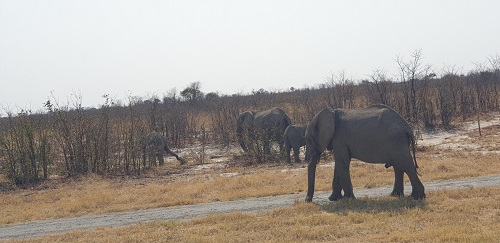 |
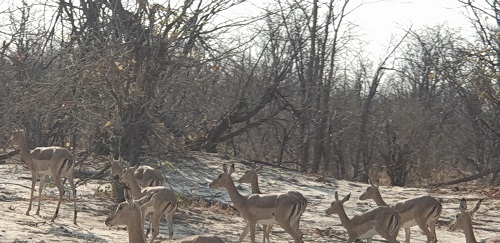 |
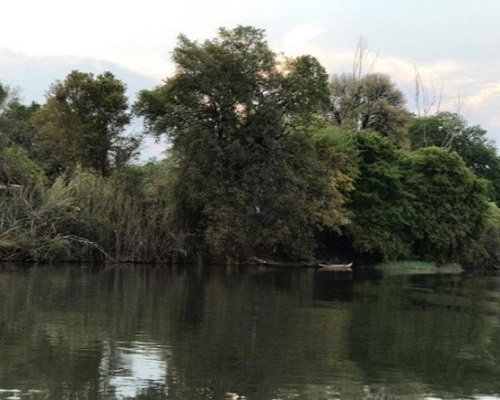 |
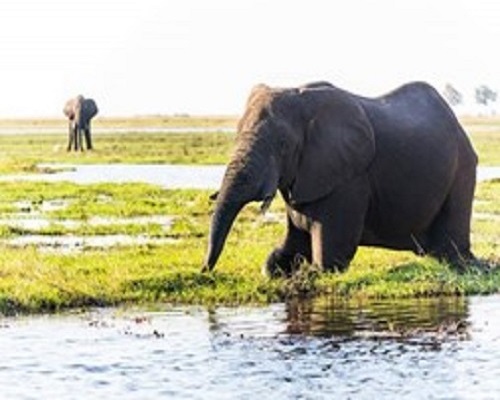 |
The vegetation in the Chobe region is not different from the Okavango one, but one can notice the gigantic baobab trees or mowana which grow thick and can survive for thousands of years. Other tall trees are visible and accompanied by a scenic view of giraffes munching on the leaves of these trees. The grass, wild fruits and vegetables provide good feeding for the variety of animals.
The North Eastern Region
The beauty of the flora and fauna in this region is mostly found in privately owned game reserves and parks. The Tuli Game Reserve provides spectacular wildlife view and vegetation to bringing life and remarkable ambience to nature. The Tuli Game Reserve covers 71,000 hectares of diverse habitat hosting 48 species of mammals, over 350 species of birds, with an estimated 20 000 animals. There are wild fruits and plants such as the mophane tree and features such as riverine woodland, marshland and more plants around.
In all the reserves and parks in the north eastern region animals largely feed on the mophane trees, which include elephant, kudu, zebra, impala, duiker, wildebeest, waterbuck, steenbok, and warthog, large herds of eland, white rhino, elephant, giraffe, gemsbok.
Predators such as lion, leopard and hyenas can be seen all year round. There are over 350 different species of birds for bird enthusiasts.
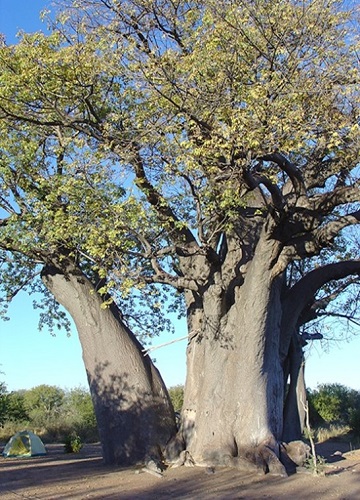
Makgadikgadi and Nxai area
The Makgadikgadi Pan salt flats which include Nxai Pan is the long grass territory and true animal habitat for grazing. Common in the area is the acacia as well as mophane tree in the clay soiled area. The tree that dominates the areas is the baobab tree mostly the Baines Baobab named after the British painter and pioneer Thomas Baines.
Southern Botswana
The Southern part of the country covers the capital city Gaborone and surrounding villages. These areas have received most numbers of people due to rural-to-urban migration and significant structural developments there isn’t much to view except in the nearby game reserves. The bushy area is characterized by grasses spread across long areas, thorny trees and shrubs including plants such the acacia tree and wild animals in reserves around Gaborone.
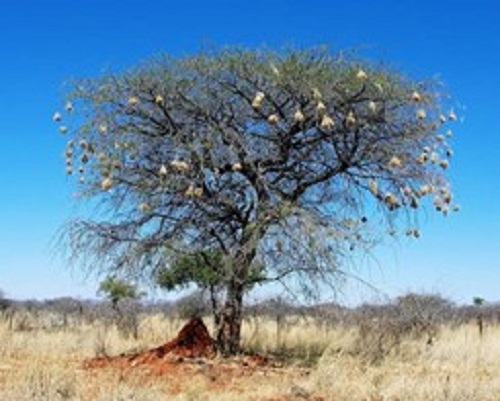
Mokolodi Nature Reserve
Situated along the Gaborone-Lobatse road 10km South of Game City shopping mall, the Mokolodi nature reserve offers quick getaway from the city for one to experience nature's flora and fauna.
Mokolodi offers game drives, wild animal tracking activity and guided walks. Wild animals found within the reserve are white rhino's, giraffes, elephants, kudu, cheetah, warthog, zebra, steenbok, duiker, impala, baboons, monkeys, springboks, ostrich, leopard, bushbuck, gemsbok, wildebeest and mountain reedbuck. There are some birds around to watch like the red headed finch, Southern Masked Weaver, hornbill (yellow - billed) and the Grey Louire bird. The reserve has a Reptile Park for your adrenaline rush.
On flora the area has the same type of plants found in the southern parts of the country with wide spread grasses, shrubs and thorny trees like the Acacia tree. The plants get water from the river stream close by and the dam located within the reserve.
Other game reserves which offer uninterrupted opportunities to connect with the flora and fauna in the southern parts of the country include Gaborone game reserve and Khutse Game reserve.
Flora and Fauna Conservancy
Preservation of Botswana’s flora and fauna falls under the Ministry of Wild, Environment and Tourism via some regulations, while the Botswana Tourism Organisation (BTO) is entrusted with promoting the Botswana tourism sector globally. The Forest Conservation Botswana (FCB) entity ensures that the much needed strategies are put in place to save and protect the flora and fauna against poachers, wildfires, deforestation and harsh climate conditions just to name a few.
Currently there are 26 wild species and 21 birds protected under the Wildlife Conservation and National Parks Act of 1992. These include Brown hyena, Black and white rhinoceros, Square-lipped rhinoceros, Cheetah and birds Include; Wattled Crane, cape vulture, peregrine falcon, black-cheeked Lovebird, Slaty Egret and the flamingos.
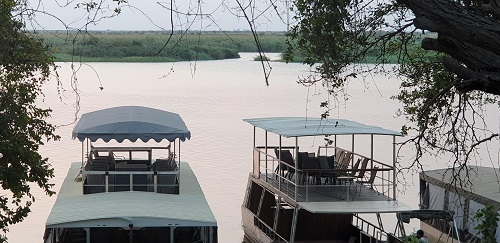 |
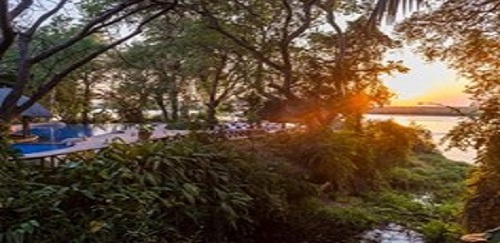 |
Adventure activities in the tourist zones
There are a good number of local Conservation organisations whose aim is to preserve the nation’s flora and fauna especially plants and animals considered endangered and going instinct. These are based in such places as the Nata Birds Sanctuary, the Khama Rhino Sanctuary, Okavango Swamps Crocodile farm and Maun Wildlife National Park, just to name a few. All places must be visited to witness the beautiful flora and fauna the country has to offer.




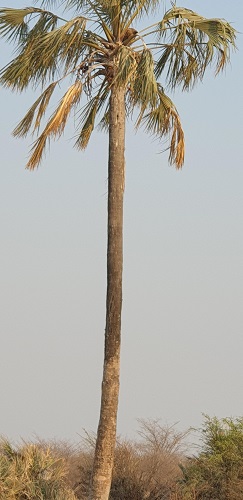
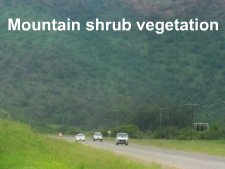
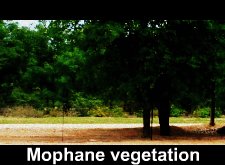
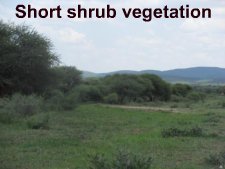
New! Comments
Have your say about what you just read! Leave me a comment in the box below.